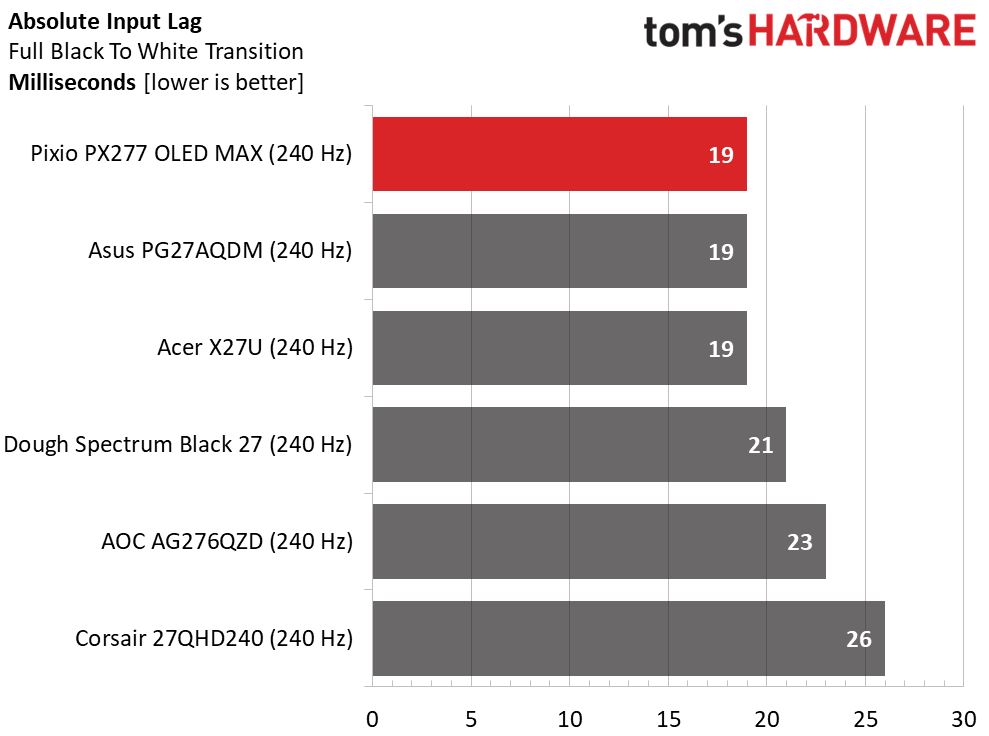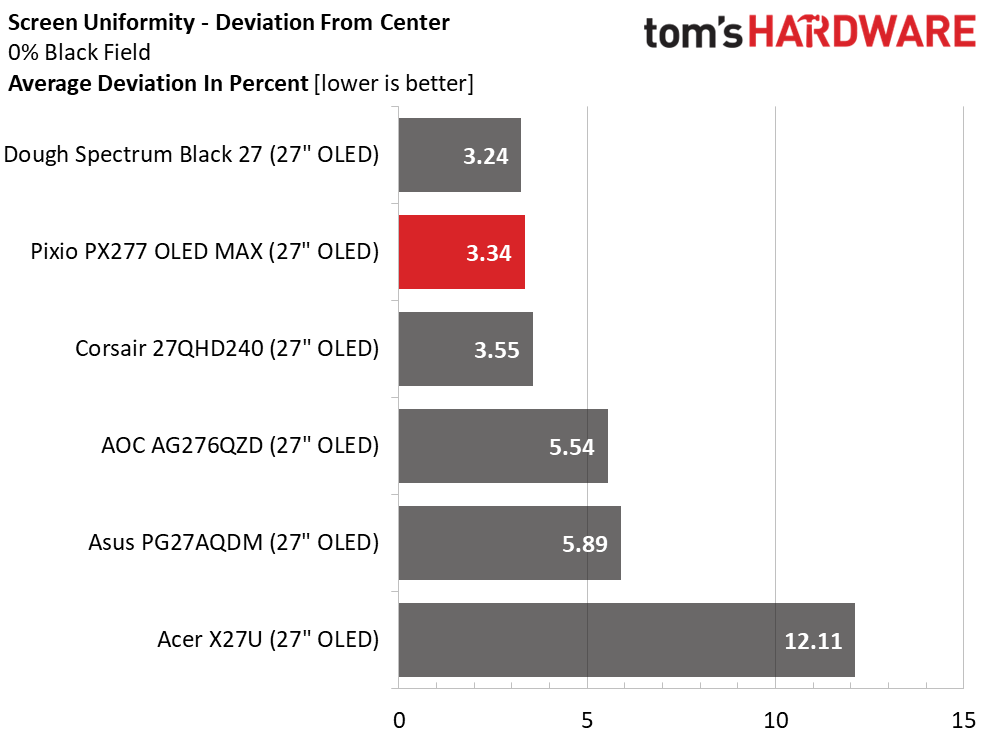Why you’re able to trust Tom’s HardwareOur expert reviewers spend hours testing and comparing products and services so you can choose the best for you.Find out more about how we test.
Response, Input Lag, Viewing Angles and Uniformity
The PX277 OLED MAX’s comparison group is all 27-inch QHD 240 Hz OLEDs. We have the Dough Spectrum Black 27,Acer X27U,Asus PG27AQDM,Corsair 27QHD240andAOC’s AG276QZD.
Pixel Response and Input Lag
Click hereto read up on our pixel response and input lag testing procedures.
The PX277 OLED MAX may be less expensive than the other screens here, but it gives up nothing regarding performance. It draws the screen in 4ms, the same as Dough and Acer. And it has super low input lag. With 19ms total lag, it is in the fastest group of monitors I’ve tested. What’s the record? I recorded 17ms total lag from a 360 Hz MSI NXG253R in 2021. It’s a 25-inch FHD IPS screen. The Pixio impresses by matching the best OLEDs I’ve tested from mainstream manufacturers. Smooth? Absolutely. There is no motion blur over 200fps. The only bummer is that users running at lower speeds have no strobe option. At 144 Hz and below, you’ll see some blur.

Test Takeaway:The PX277 OLED MAX matches speed with the fastest gaming monitors available. Its video processing is without flaw. The lack of a strobing option might be an issue for users with less stout video cards but if you can run QHD at 200fps, you’ll be golden. This is one quick display.
Viewing Angles
The one advantage non-QD OLEDs have is less color shift and light reduction at off-axis viewing positions. The PX277 OLED MAX has no reduction in output and color goes just a tad cool. QD screens go red and lose around 10% of their light. These are minor points, because the worst OLED will still trounce the best LCDs. This is excellent performance.
To learn how we measure screen uniformity,click here.
Buyers of the PX277 OLED MAX don’t have to worry about screen uniformity. My sample measured an impressive 3.34% deviation which is essentially nothing. 10% is where you might see an issue in a totally dark room. You won’t see any hotspots from this Pixio.
MORE:How to Choose the Best HDR Monitor
Current page:Response, Input Lag, Viewing Angles and Uniformity
Christian Eberle is a Contributing Editor for Tom’s Hardware US. He’s a veteran reviewer of A/V equipment, specializing in monitors. Christian began his obsession with tech when he built his first PC in 1991, a 286 running DOS 3.0 at a blazing 12MHz. In 2006, he undertook training from the Imaging Science Foundation in video calibration and testing and thus started a passion for precise imaging that persists to this day. He is also a professional musician with a degree from the New England Conservatory as a classical bassoonist which he used to good effect as a performer with the West Point Army Band from 1987 to 2013. He enjoys watching movies and listening to high-end audio in his custom-built home theater and can be seen riding trails near his home on a race-ready ICE VTX recumbent trike. Christian enjoys the endless summer in Florida where he lives with his wife and Chihuahua and plays with orchestras around the state.



